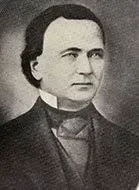Real Celebrities Never Die!
OR
Search For Past Celebrities Whose Birthday You Share

source:wikipedia.org
Walter Hunt
Birthday:
29 Jul, 1796
Date of Death:
08 Jun, 1859
Cause of death:
Pneumonia
Nationality:
American
Famous As:
Mechanical engineer.
Age at the time of death:
62
Introduction to Walter Hunt
Walter Hunt, a mechanical genius and prolific inventor, left an indelible mark on American innovation during the 19th century. Born on 1796 in rural Martinsburg, New York, Hunt’s ingenuity and creativity led him to conceive a wide array of revolutionary devices. From the safety pin to the sewing machine, his inventions continue to impact our daily lives. Despite his remarkable contributions, Hunt’s story is one of unfulfilled financial success, as he often sold his patent rights at low prices.
Early Life and Inventions
Growing up in the textile mill town of Lowville, Hunt developed a knack for providing mechanical solutions to complex problems. In 1826, he collaborated with mill owner Willis Hoskins to invent and patent improvements to the flax spinner, showcasing his early talent for innovation. Seeking capital for his inventions, Hunt ventured to New York City, where he secured patents for various devices, including a rope-making machine, a fountain pen, and even a repeating rifle. However, it was his sewing machine, invented in 1833, that would eventually capture the attention of the world.
The Sewing Machine Invention
Hunt’s sewing machine was a groundbreaking invention that utilized a lockstitch, a revolutionary departure from traditional hand-stitching techniques. By employing two interlocking threads, Hunt’s machine created a durable and efficient seam.
Remarkably, Hunt’s invention predated the patent awarded to Elias Howe Jr., who claimed to have created the first machine using a similar lockstitch. Hunt’s reluctance to patent his sewing machine and concerns about its potential impact on seamstresses’ employment ultimately left him in the shadows of history.
The Invention of the Safety Pin
In 1849, Walter Hunt found himself in dire financial straits, owing a $15 debt to a man named J.R. Chapin. Fueled by the need to repay this obligation, Hunt turned his attention to inventing a new device.
Through twists and turns, he fashioned a metal wire into what he called the “dress pin.” This pin, with its ingenious spring mechanism and protective clasp, would evolve into the safety pin we know today. Despite its immense utility, Hunt sold the patent rights for a mere $400, missing out on the immense wealth generated by his invention.
Lack of Financial Success
Throughout his life, Hunt continued to innovate and patent a wide range of devices. However, he often sold off the rights to his inventions, failing to capitalize on their potential financial success. While his name may have faded from public memory, Hunt’s contributions to American innovation remain significant.
Final Days and Legacy
Walter Hunt spent his final days in New York City, where he had lived and worked for much of his life. On June 8, 1859, at the age of 62, Hunt died of pneumonia at his place of business. He was buried in Green-Wood Cemetery in Brooklyn, New York, where a small red granite shaft marks his grave.
Remembering Walter Hunt
Hunt left behind a remarkable legacy as a prolific inventor, though he never achieved great wealth from his creations. He invented or improved dozens of everyday items and industrial machines, including the safety pin, sewing machine, and fountain pen.
Many of his inventions are still used today in essentially the same form as he patented them. Despite his ingenuity, Hunt often sold his patent rights for low prices, missing out on the financial rewards of his innovations.
Legacy and Impact
Today, Walter Hunt is remembered as one of America’s most creative inventors. His story serves as both an inspiration and a cautionary tale for aspiring innovators. While his inventions have had a lasting impact on society, Hunt’s tendency to undervalue his creations meant he never fully benefited from his genius.
Nevertheless, his contributions to technology and everyday life continue to be recognized and appreciated more than 160 years after his death.
Name:
Walter Hunt
Popular Name:
Walter Hunt
Gender:
Male
Cause of Death:
Pneumonia
Spouse:
Place of Birth:
Martinsburg, New York, U.S.
Place of Death:
New York, United States
Occupation / Profession:
Personality Type
Debater: Walter Hunt was constantly on the looking for innovative ways to solve problems which made him a successful inventor.
He held over 20 patents for various inventions during his lifetime.
Walter Hunt invented the safety pin, patented in 1849.
Despite his innovative creations, Hunt struggled financially throughout his career.
Hunt's inventions revolutionized clothing manufacturing and fastening methods.
His sewing machine used a lockstitch mechanism for improved efficiency.
Hunt also invented the first successful sewing machine in 1834.
He also invented the first modern feasible sewing machine, fountain pen, bell, burning stove, and many more inventions.
Walter Hunt invented the safety pin